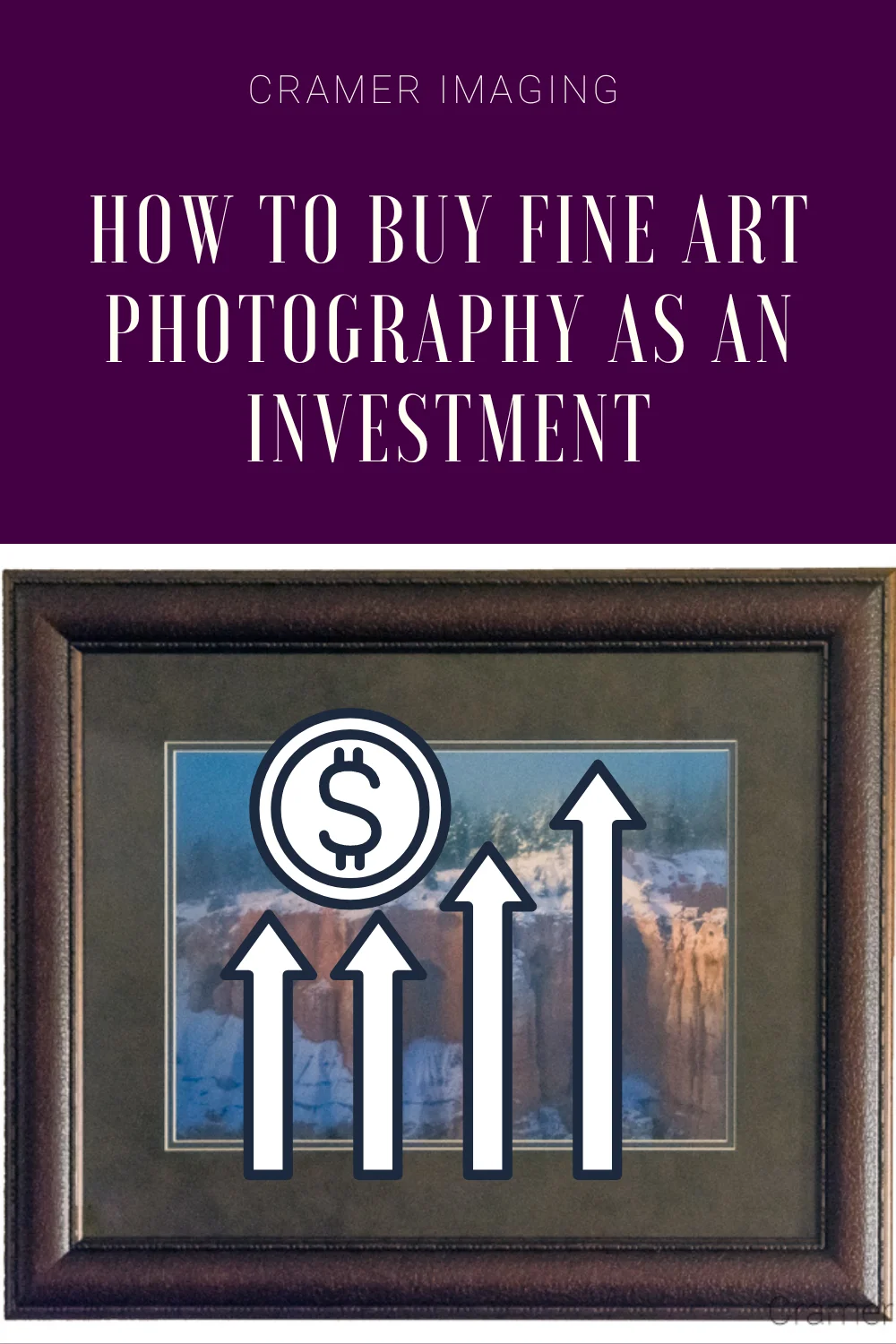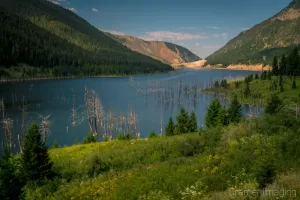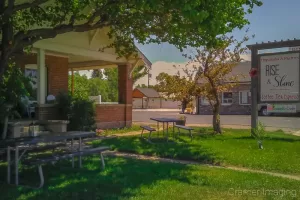How to Buy Fine Art Photography as an Investment
Shop

- Buying Fine Art Photography as an Investment
- Fine Art Photography Investment Advice
- How to Buy Fine Art Photography as an Investment
For the past couple of weeks, we’ve been talking about investing in fine art photography. We’ve introduced you to the idea and we’ve talked about investment advice and strategies revolving around fine art photography. If you haven’t read those articles, I highly recommend reviewing them before reading this article. Now it’s time to talk about how you specifically invest in fine art.
A Quick Disclaimer: Any kind of investment, fine art photography included, carries a certain amount of risk. Make sure that you understand the benefits and the risks associated BEFORE you make any kind of investment, even in fine art photography.

I’ve opened every single one of these articles about investing in fine art photography with this disclaimer for a reason. You are about to spend money, perhaps a great deal of money, on buying fine art for the purpose of building a future with it. This is more than just decorating the walls of your home. This is investing. There’s a risk, sometimes a big risk, that your investment won’t pay off. Sometimes investments drop in value. Sometimes bets on future value don’t end up paying off.
You must be aware of this and willing to lose the money you are investing in order to proceed because, sadly, life happens.
Decide What Kind of Fine Art Photography You Want to Invest In
Since there’s lots of different kinds of photography, and even fine art photography, you’ll need to choose what kind of photos you want to buy.

Good Choices to Invest In
Some kinds of photos you might consider buying include:
- Landscapes
- Abstracts
- Wildlife
- Macro Nature
- Photos containing people who are more generic in appearance
- Cityscapes
- Architecture
These kinds of photos are always popular and in-demand. They’ll continue to have a market for years to come.
Poor Choices to Invest In
Some kinds of photos you might consider avoiding include:
- Political Content
- Wedding Photos
- Portraits
- Nudes
- Photos of Events
- Fashion
- Paparazzi Photos



These kinds of photos tend to have a short market lifespan or a limited market due to adult content. Generally, they won’t hold their value over time nor will they likely increase in value if the photographer makes it big.
Research
You will want to do your homework when it comes to investing in fine art photography. Research out where you want to buy the photo(s) from. Learn more about what photographer’s work you want to buy. Research out the photographer whom you are buying from (current and likely future reputation, style, subject matter, etc.). Your homework might be as easy as a simple internet search. Still, do your homework.


Some questions you might check on when buying from a fine art gallery include:
- Where is the gallery located?
- What is the gallery’s reputation?
- What kinds of fine art does this gallery tend to display?
- Does this gallery offer matting and framing services?
- What kind of return policy does this gallery have?

Some question you might check on when buying from the photographer include:
- What kind of work does the photographer create?
- How does the photographer represent him/herself online? (check website and social media)
- What is the photographer’s current reputation?
- How likely is it that this photographer will make it big if he or she has not already done so?
- What kind of return policy does this photographer have?
- Does the photographer offer in-house matting and framing services or will you need to seek an outside service?

Make sure you are satisfied and confident in your choice of fine art photography investment. This an only be done if you put in the time to research everything you need to know.

Make Your Purchase
This is probably the most simple and straightforward step in the process. Once you know what you want to buy along with where and who you want to buy it from, the next step is to buy the photo you want.

Go to the gallery or the website of your choice and make your purchase. Write a check, spend cash, or put in on a credit or debit card depending on what the gallery or online store you’ve chosen accepts. Afterwards, your investment in fine art photography begins.
Protecting Your Investment
A big part of buying fine art photography as an investment is to protect that investment. This means taking care of a few final aspects.
If you didn’t buy the photo with a mat and frame, you’re going to want to get one. Those help protect the investment which is your photo print. Make sure that you are getting something quality and acid-free. Archival quality will work well. Since you bought this photo as an investment, it’s more important to you that it lasts long-term without damage. If you want to learn more about acid-free, check out this article here.

If you plan on displaying this beautiful new investment of yours, you will need to choose a place where you can display it without the damaging effects of sunlight and UV radiation. Those will damage and fade your fine art photo over time. If you would like to learn more about those effects, then please check out this article here. In fact, the rest of the 5 part series will give you more hazards you should be protecting your fine art photography investment from.


The final thing that you need to do is to insure your investment. Since this particular piece of fine art photography is something which you are building your future around, you will need to take extra care that you will be compensated if life does something nasty to the photo. To learn more about why and how to insure your fine art photo, check out this 3 part article series on the subject. The first article is found here. Always make sure to talk to your insurance agent to learn what options are available to you with your current policy.
Watch the Market

The final thing that you need to be prepared to do when you buy fine art photography as an investment is to watch the market. Just like any other market out there, the fine art photography market goes up and down.
If you bought your photo using the first strategy from last week, then you need to keep an eye on the photographer to learn whether he or she has finally achieved the kind of reputation where you can sell that print for a huge return. It may take several years for the photographer to do so. Be prepared to be patient but keep tabs on the situation.
If you bought your photo using the second strategy from last week, then you likely will not be able to turn the photo around for a huge payday ever. You will, however, be reasonably assured that you will be able to get most of your money back from the investment should you ever decide to sell.
If you keep good tabs on the photography market, you may be able to sell the print at a time when you can get more than your original investment price back. In order to accomplish this, you need to buy when the market is low and sell when it’s high. It’s the same with any other investment you could make.
Conclusion
Investing in fine art photography, just like any other kind of investment, involves research and risk. It requires you to decide what you want to invest in and to keep tabs on the market so you can make the best return on your money possible. It’s not for the faint-hearted.
However, if you’re interested in investing in fine art photography, you now know what to do. Find your photographer and find your photo. Make your purchase. Take good care of it. Enjoy your new fine art since the most important investment you can make with fine art is in your happiness and quality of life.
Have you ever invested in fine art photography? We would love to know more about your experience. Please tell us your story in the comments below. We’d also love to see a picture of the photo you invested in. Please include one with your comments. Please also remember to not violate copyright when you do so.
Best Sellers
Cramer Imaging Newsletter

Receive monthly updates in your inbox from us.





